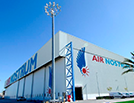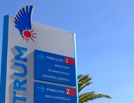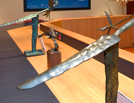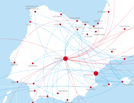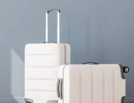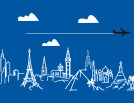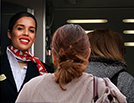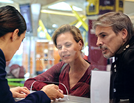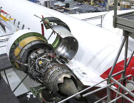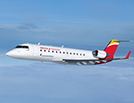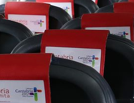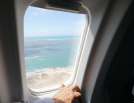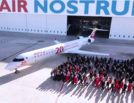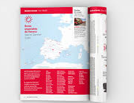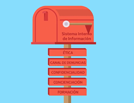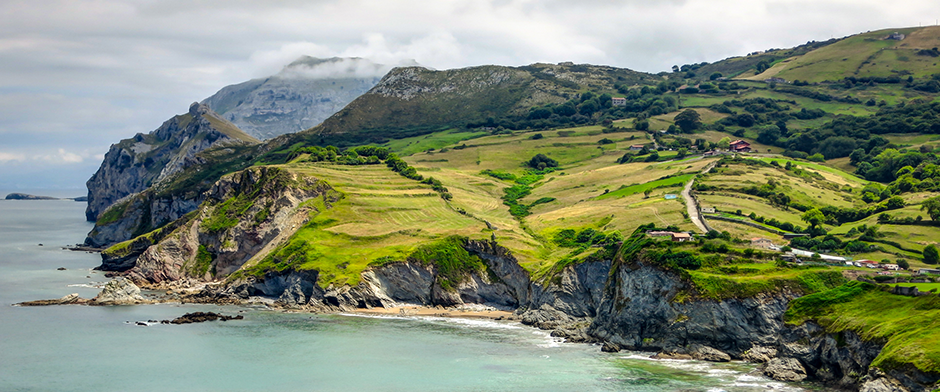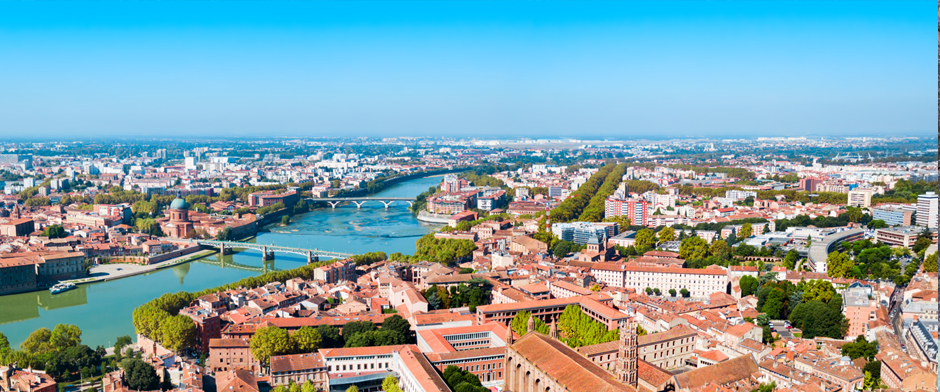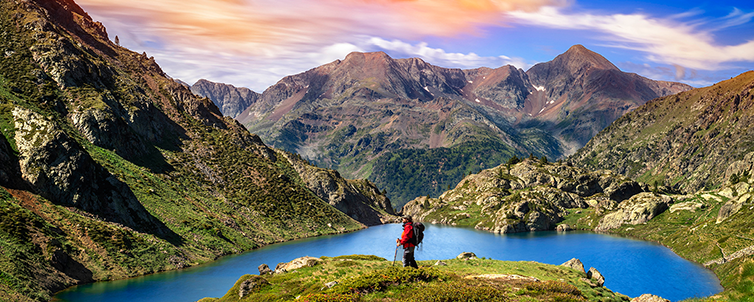SEVILLA
A city to wander around
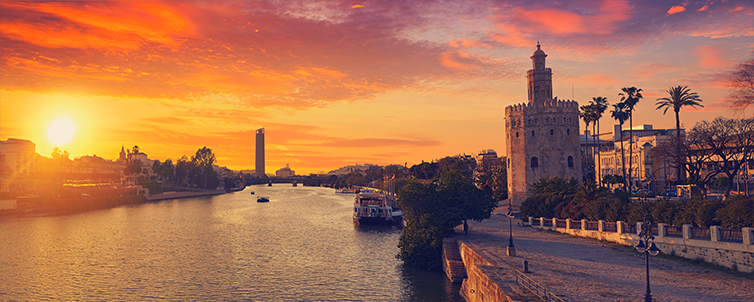
Sevilla is a destination worth visiting more than once. With a distinct Andalusian atmosphere, visitors will fall in love with this city: strolling down the Plaza de España or the Guadalquivir shoreline... That’s what Sevilla is all about: wandering around and enjoying the small pleasures in life.
OLGA BRIASCO
You clearly have heard about Sevilla. In fact, you might even have a clear image of The Giralda bell tower watching over the river or of the beautiful Plaza de España in your mind. But visiting only those must-see landmarks featured on travel guides and pamphlets will make you miss the things that will make you fall in love with the city and come back again in the future. I am talking about the smell of orange blossom in Spring, about the colorful flowers decorating doorways and courtyards, about the people playing the guitar at dusk, about the lively laughs and conversations coming out from the terraces and rooftops. In a few words, this is a city with more treasures than you can imagine.
Our tour begins at the quiet, emblematic María Luisa Park. Visiting this 34-hectare park full of beautiful nooks and museums can take you almost the entire day, so head directly to the towers rising above the trees. These are Plaza de España’s North and South towers. In order to reach this square, you will have to walk a dirt road that crosses San Telmo Palace’s old garden. Designed by Aníbal Gonzalez, it is located near the Guadalquivir River, which for centuries served as the gateway to the Spanish American colonies. Thus, the square and its building were a symbol of brotherhood with Spanish America.
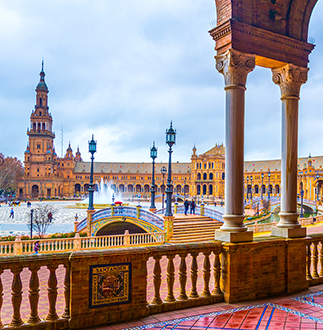
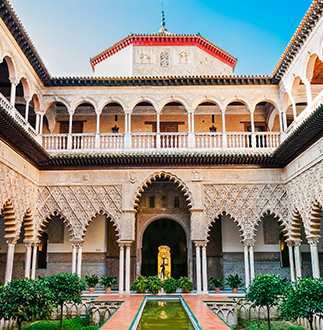
The Plaza de España is located near the Guadalquivir River, which for centuries served as the gateway to the Spanish colonies. This square –with its is arms opened– is a symbol brotherhood towards Spanish America
Stepping into this spectacular square is a very touching experience. Walking through it is walking through Spain itself, as its enormous benches are decorated with ceramic art representing the 48 Spanish provinces (back when it was built, the Canary Islands were just one province, while the art representing Sevilla is located on a different location). Taking a selfie on your home province is a must for most Spanish, thus making it difficult to take it alone. To top it all up, busts of illustrious characters such as Quevedo, Magallanes, or Velázquez can be found over the benches. And if you happen to be a romantic person, renting a boat and sailing on the square’s canal is a wonderful idea.
Still with this warm, symbolic feeling, go now to the Royal Tobacco Factory (the first one in Europe), which now serves as the University of Sevilla. From here, you can visit another of Sevilla’s unique, breathtaking locations: the Real Alcázar de Sevilla. Walking its yards and gardens, getting lost in its silent nooks, escaping from the sun under its orange trees, palms, and lush vegetation, and listening to sound of water and painters’ brushes in the background will make you feel as if time has stopped. We encourage you to buy tickets in advance to avoid queues.
Once you leave, walk towards the cathedral situated next to the Archivo de Indias, which together with the cathedral and the Alcázar form a UNESCO World Heritage Site trio. In case you want to rest, visiting Las Columnas (a tavern located at the corner of Rodrigo Caro street in the Santa Cruz quarter) is a good idea. Here, the waiters will make you feel like home, serving you one of Sevilla’s traditional dishes: the pringá (a mashed combination of meats). Strolling down this quarter will make you fall in love with Sevilla: Andalusian terraces, old taverns, small squares… Even if full of tourists, you will soon notice Sevilla’s peaceful life.
If you head to the old Jewry quarter, you will arrive at the Patio de las Banderas. Here, you will have the most impressive view of the Giralda and the Plaza del Triunfo and of the Santa María Cathedral, one of the most photographed landmarks in the city. At the square, you will also find beautiful horse carts.
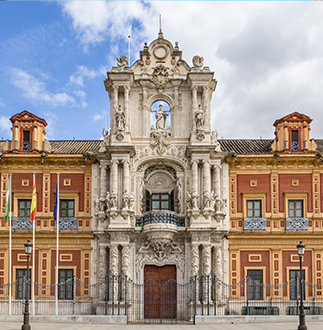
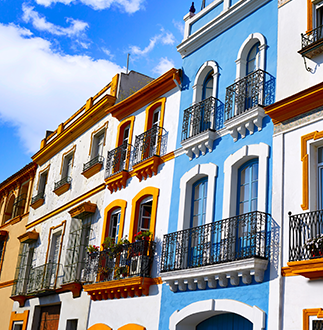
The Torre del Oro (Golden Tower) is your next destination. It was named this way due to the old tile decoration, which used to reflect the river. From here, you can visit Guadalquivir estuary and one of Triana quarter’s most famous streets: Betis Street, with its colorful façades and bars. Before entering Triana, go back and marvel yourself at the Maestranza Bullfight Arena.
From here, you have two options: going back to the city center or visiting Triana. Back in the city center, malls such as Sierpes, Campana, Tetuán, and Cuna will surprise you due to its many bars and terraces (I recommend you the Las Golondrinas or la Blanca Paloma bars). Forget about maps and routes and lose yourself in the streets of the city until arriving at Metropol Parasol (better known as The Mushrooms). From here, you will have some spectacular views of a skyline full of towers and bell towers.
You will also come across beautiful churches such as Santa María la Blanca or buildings like the Casa Consistorial (Sevilla’s city hall) San Telmo Palace, or Cinco Llagas Hospital.
Last but not least, there’s Sevilla’s treasure: Triana, one of the most charismatic quarters in the city. You can access it by crossing Isabell II Bridge (better known as Triana Bridge). A small chapel dedicated to Our Lady of Mount Carmen and a local market will be the first things you will encounter here.
If you come here at noon, I recommend you to sit down at one of the market stalls in order to enjoy a craft beer or some fresh oysters. Not only that, you can also cross the bridge and enter one of the restaurants at Betis streets. From here, you will have
some breathtaking views of the gardens, the bullfight arena, the Torre del Oro, the Giralda, and the Plaza de España towers. The perfect way to continue to fall in love with this city, its locals, and the colors that make Sevilla so special.
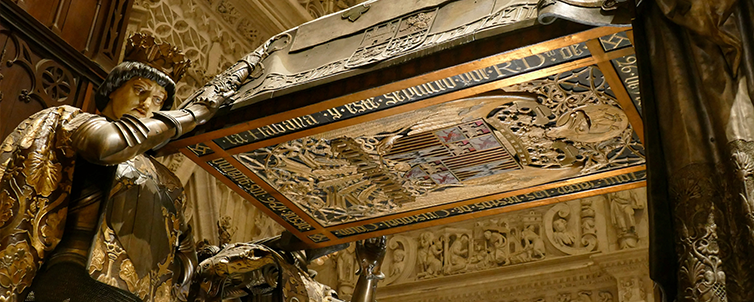
COLUMBUS’ REMAINS ARE LOCATED IN SEVILLA
Many mysteries surround the figure of Christo- pher Columbus, but one thing is sure: the remains of admiral Columbus are located in Sevilla’s cathedral. Buried in a tomb guarded by the statues of four knights representing the four kingdoms of Spain (Castile, Aragon, Navarre, and León), people doubted the remains belon- ged to Columbus, but a test carried out by the University of Granada certified they correspon- ded to the explorer.

